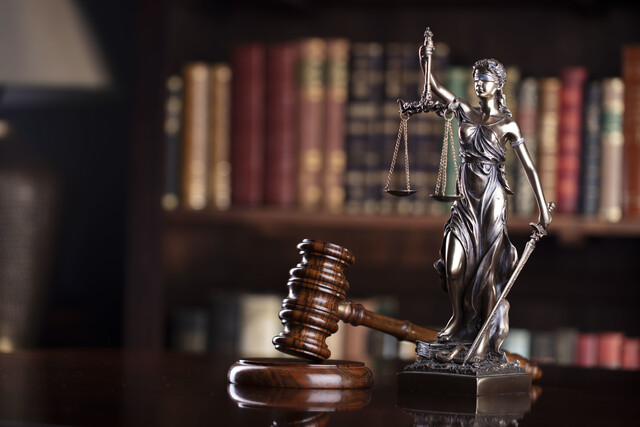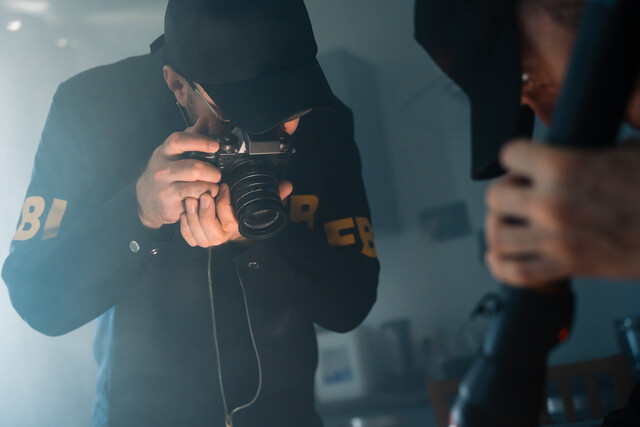Introduction
Crime scene investigation is, by its most basic definition, the method of protecting, processing and reconstruction of a crime. It doesn't matter where the crime took place or if there are more than one crime scenes involved. A crime scene can envelop more than one location, as in the case where a victim has been killed in one location and found in another. A crime scene can be on land or in water, in a tree or buried six feet under.
Crime scenes are a source for physical and material evidence. However, the interpretation or reconstruction of a crime scene does not stop with obvious objects or clues. When investigating any crime scene, the investigator, whether police officer, detective or technician, must also take into consideration a philosophical approach to the scene.
Crime scene investigators must never assume they know what happened based on visual evidence, nor should they become biased or jump to conclusions when viewing any type of evidence, which includes physical evidence as well as witness statements.
A crime scene investigator must always perform his or her job competently and with integrity, reserving judgment until all evidence has been collected, analyzed and then used to reconstruct a crime.
There are five major components to any Crime Scene Investigation process:
- Teamwork
- Documentation
- Preservation
- Common Sense
- Flexibility
Teamwork is vital. Many different agencies might be involved in the response to a crime scene, as well as the collection of evidence. Teamwork also ensures that bias does not come into play during the collection or documentation of evidence and that justice for the victim is served. There are many different elements involved in a criminal investigation, such as a uniformed police officer, detectives, crime lab technicians, photographers, coroner and other forensic specialists.
Because of this, no one person who responds to the scene is more important than any other. Those specializing in fingerprint analysis or crime scene photography are just as vital to the collection and interpretation of evidence as the detective, who views the scene and then begins to conduct his or her investigation creating diagrams, measurements and then taking witness statements.
Every person who responds to a crime scene is an important and vital part of the process, part being the key word. Egos and attitudes have no place at a crime scene.
Documentation of a crime scene is a vital component to the overall gathering of evidence. Taking photographs and measurements, extensive notes and observations will be recorded and referred to on countless occasions during the course of an investigation. Because most crime scenes are not permanent, it is extremely important to properly and accurately record every possible detail before the victim is removed before time and weather take their toll on the scene, for it can never be re-created exactly as it was upon arrival of the first law enforcement personnel to the location.
Preservation of the crime scene immediately upon arrival is tantamount to the collection of evidence, as well as the integrity of the scene for processing. Many cases have been thrown out of court because improper procedure was involved, or officers or detectives arriving first on the scene did not take extreme care to ensure a "sanitary" scene.
Common sense seems like a given, but is a necessary part of approaching and analyzing a crime scene. As such, flexibility, in the extent that a crime scene investigator is able to adapt such analysis to the discovery of new evidence or possibilities, is as much a part of processing a crime scene as the physical evidence in plain view.
Understanding a Homicide Crime Scene
Nevertheless, location of the body or incident becomes the primary crime scene, and is where most of the evidence is usually gathered. In this type of situation, several questions exist:
- Where did the initial assault or murder occur?
- Where did the body come from?
- Did a vehicle transport the body to the current location?
- Is there physical or trace evidence connecting one scene to another?
A primary crime scene can be described as not only where an assault or murder took place, but also where someone forced entry, a suspect's residence, an escape route or even a suspect's clothing or body.
A homicide investigation always starts at the location of the primary crime scene. Police or other law enforcement personnel are almost always called to a location where a crime, a body or a witness to the crime, is located. In addition, the location where the body is discovered usually offers evidence of the crime and acts as a starting point, or base, for the ensuing investigation.
A body and areas surrounding it offer crime scene investigators information such as manner of death, identity of the victim and perhaps even clues as to the circumstances surrounding the death. When first approaching a crime scene, it is important for any personnel involved to recall Locard's principle of evidence:
-
- The perpetrator will leave some evidence behind.
- The victim will retain some traces of contact with that individual, or traces from the victim may be left on the perpetrator.
- The perpetrator will take traces of the scene away with him.
Such traces don't have to be visible with the naked eye. They can be microscopic traces of carpet or hair fibers, blood and other body fluids, plant life and even specks of dirt.
As such, anything may end up being valuable as trace evidence, even if it seems inconsequential or unimportant upon first viewing. It is up to the crime scene investigator to remember that when approaching evidence collection. Better to take too much away from the scene of the crime than leave something valuable behind, just because its import was not considered at the time.
The most important lesson that is stressed over and over again in crime scene investigation and law enforcement training classes is that the primary duty of anyone responding to the scene of a crime to protect and preserve the crime scene.
That's easier said than done in many cases, especially if a crime scene investigator is unsure of what constitutes physical evidence and the boundaries of a crime scene. There are three basic types of evidence found at a crime scene.
- Objects
- Impressions
- Body Fluids and Components
Objects commonly found at crime scenes can include, but are not limited to, weapons, papers, vehicles, cigarettes and furniture or personal belongings.
Impressions are those such as fingerprints, tire tread marks, bullet holes, dented walls, footprints and palm prints.
Bodily fluids and components can include blood, urine, feces, semen, hair, skin tissues and even vomit.
Upon arrival at what may be considered a crime scene, it is the responsibility of the responding officers or crime scene investigators, if the victim is dead, to secure the area. At that point, the boundaries of the crime scene should be determined and secured.
The crime scene begins where the confrontation took place or where the body is found, and then widens to involve any escape routes, if known or discovered, as well as areas where signs of struggle or chase are evident. To determine this boundary, there are several hard and fast rules:
- Enclose as large of an area as possible to start, as the crime scene can be narrowed later if necessary. Better to start off bigger than smaller.
- Evaluate the scene by determining:
-
- Location of body
- Eyewitnesses
- Presence of physical evidence
- Natural boundaries; a room, a house, a car, etc.
It is easier to determine and isolate indoor crime scenes than those found outside, but location, amount of vehicular or pedestrian traffic, as well as weather conditions, may force crime scene investigators or first-response law enforcement personnel to adapt boundaries as necessary.
Once a crime scene has been identified, it is up to the crime scene investigator to examine all objects and evidence in the scene before it can be collected.
The main objectives of a crime scene investigation is to:
- Determine a sequence of events
- Recover physical evidence of the crime
- Reconstruct the incident
- Uncover a motive
- Determine the modus operandi
- Discover if anything has been taken from the crime scene
- Determine everything the criminal might have done
Conclusion
























